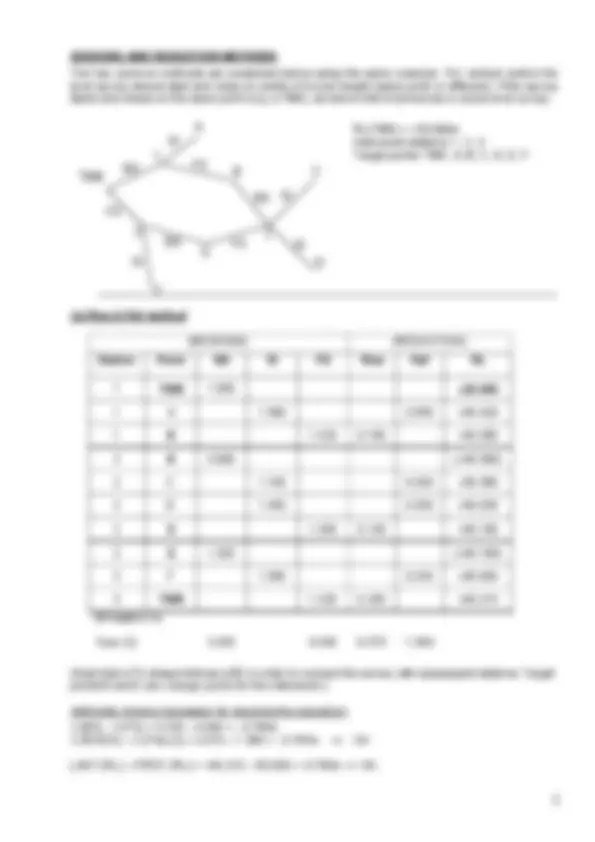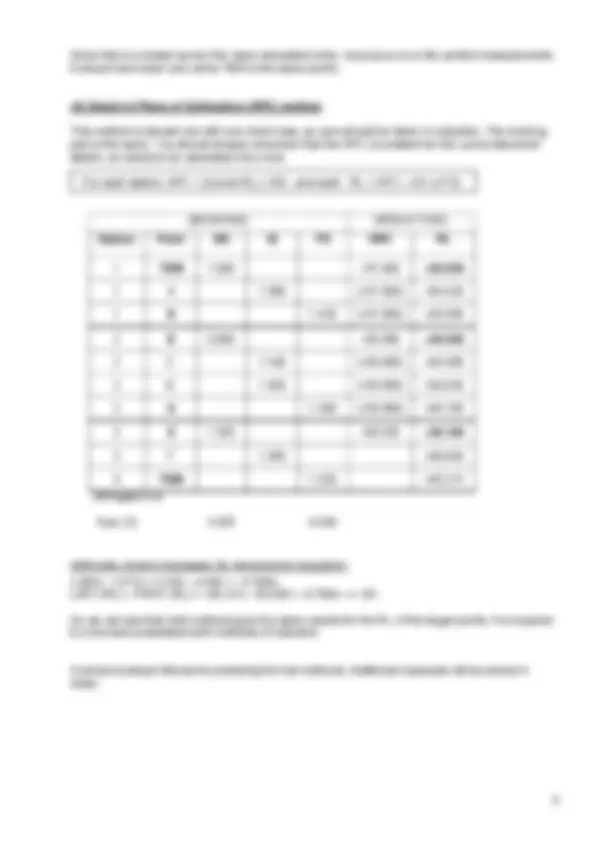




Study with the several resources on Docsity

Earn points by helping other students or get them with a premium plan


Prepare for your exams
Study with the several resources on Docsity

Earn points to download
Earn points by helping other students or get them with a premium plan
Community
Ask the community for help and clear up your study doubts
Discover the best universities in your country according to Docsity users
Free resources
Download our free guides on studying techniques, anxiety management strategies, and thesis advice from Docsity tutors
An introduction to levelling, a technique used to measure height differences on the earth's surface. It covers the basic principles, equipment (tilting, dumpy, and automatic levels), and procedures for taking level readings. The document also discusses common sources of errors and methods for booking and reducing levelling data (rise & fall and height of plane of collimation).
What you will learn
Typology: Schemes and Mind Maps
1 / 4

This page cannot be seen from the preview
Don't miss anything!



Aim: to learn the basic levelling principles, theory and applications and to be able to book and reduce levelling data.
Levelling refers to height measurements for representing the relative difference in height (altitude) between various points on the earth’s surface.
Basic equipment
(a) A device which gives a truly horizontal level (the Level). (b) A suitably graduated staff for reading vertical heights (the Levelling Staff).
Types of levels
(a) Tilting – adjustment of level bubble needed before every measurement. (b) Dumpy – adjustment of level bubble needed only once after level set up. (c) Automatic levels – self levelled instruments.
Bench Mark and Reference Datum
In order to calculate the heights of points a datum is required, i.e. a reference level. This is usually the mean sea level. For this purpose, the use of Bench Marks is necessary, and these are classified as follows:
Bench Mark (BM) – a point with known height above mean sea level (or other reference datum). These are permanent points (e.g. unchanged by weather conditions) and are provided by the Department of Lands and Surveys.
Temporary Bench Mark (TBM) – a point of known height above a pre-defined level. This level is not absolute and is defined locally by the surveyor for the purpose of the survey. Based on the TBM the survey may then later be reduced to absolute levels if the level of TBM is known.
The height of any target point is referred to as Reduced Level (RL), because it is reduced to a known datum.
Fig.1 Levelling line. For large areas a correction is required for curvature of the earth.
Common sources of errors in levelling
All the above are mistakes (blunders) and cannot be corrected unless the work is repeated. A systematic error in levelling is the collimation error of the level which is discussed later in detail.
Levelling operations
Level readings can be taken either from one location (one set-up levelling) or from various stations, if some points of interest are not visible. A level survey can be used for setting-out purposes, the presentation of soil profiles etc., as will be discussed later in the subject.
Basic definitions
Backsight (BS): first staff reading taken immediately after setting up the instrument. Foresight (FS): last staff reading taken before moving the instrument to another location. Intermediate sight (IS): all readings taken between a BS and a FS.
So, if the instrument is set up at one location only, there will be just one BS (first reading to a TBM), one FS (last reading) and several IS.
Fig.2 Levelling set-up and height calculation
Now consider Figure 2 above. The level is set up as shown, and using the staff at points A and B, height readings are recorded. This is just the height read through the telescope horizontal line of sight (known as line of collimation ). If no reduced level is known only the difference in height can be found between A and B, not their absolute levels.
Staff Reading at A is 1.135m Staff Reading at B is 1.875m
If we know that RL (^) A = +120.000m (above datum), then RL (^) B = 120.00 – 0.740 = +119.260m i.e. a fall from A. If RLB was known we would calculate a rise in level. Hence, the following can be defined:
Rise – staff reading is less than previous reading. Fall – staff reading is greater than previous reading.
The above definitions are used in the Rise & Fall method a level booking and reduction.
A second way to calculate the reduced levels is by using the Height (level) of collimation line (or plane). From the above numerical example,
Height of Plane of Collimation (HPC) = +120.000 + 1.135 = +121.135m ( as from Figure 2 )
=> RL (^) B = HPC – (Staff Reading at B) = +121.135 – 1.875 = +119.260m
The above method is used in the relevant booking and reduction.
=> difference in height is = 1.875 – 1.135 = 0.740m
l
datum
Since this is a closed survey the value calculated is the misclosure error (for perfect measurements it should have been zero since TBM is the same point!)
(b) Height of Plane of Collimation (HPC) method
This method is simpler but with one check less, so care should be taken in reduction. The booking part is the same. You should always remember that the HPC is constant for the same instrument station, so needs to be calculated only once.
For each station, HPC = (known RL) + BS , and each RL = HPC – (IS or FS)
Station Point BS IS FS HPC RL
(All heights in m)
Sum (Σ) 3.255 4.
Arithmetic checks (necessary for checking the reduction)
Σ (BS) - Σ (FS) = 3.255 – 4.040 = - 0.785m LAST (RL) – FIRST (RL) = +49.215 – 50.000 = -0.785m => OK.
So we can see that both methods give the same results for the RL of the target points. It is required to know and understand both methods of reduction.
A solved example follows for practicing the two methods. Additional examples will be solved in class.